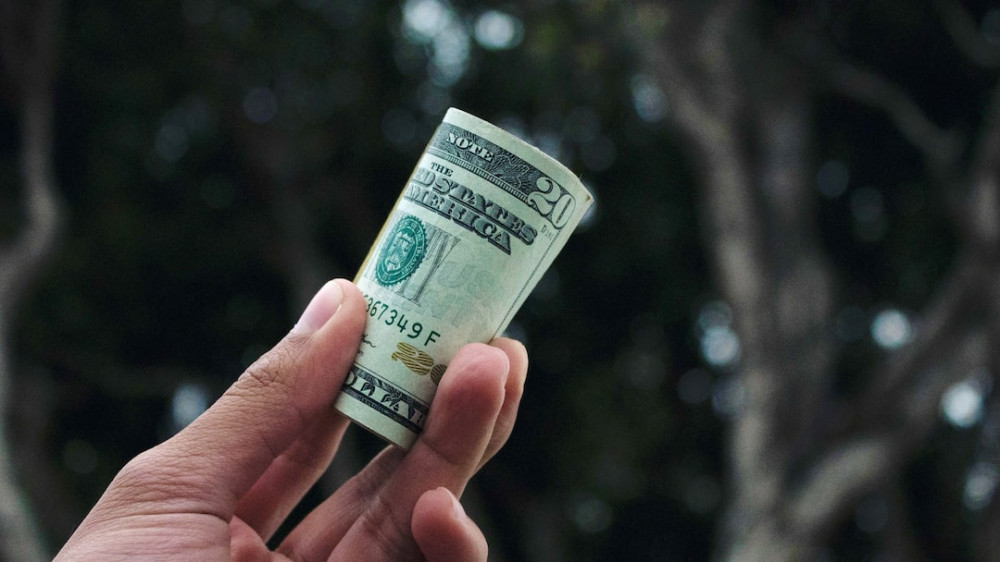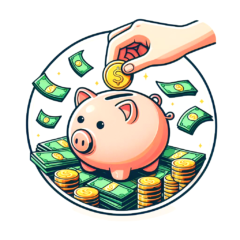
Credit card debt can be a tremendous financial burden, causing stress and hindering your path to financial freedom. The Avalanche Method is one of several strategies that can help you eliminate this burden. In this comprehensive guide, we will explore what the Avalanche Method is, how it works, and the step-by-step process to implement it successfully.
What is the Avalanche Method?
The Avalanche Method is a debt repayment strategy that focuses on minimizing the overall interest you pay, while paying down your cards as quickly as possible. It’s called “Avalanche” because, like a snowball rolling downhill and gaining momentum, this method helps you tackle your debts methodically and efficiently.
Here’s how it works: First, you identify all your outstanding credit card debts and organize them based on their interest rates (from highest to lowest), then allocate extra funds toward paying off the highest-interest debt first, while making minimum payments on the rest. Once the highest-interest debt is paid off, you move on to the next one, and so on, until all debts are cleared.
Why Choose the Avalanche Method?
The Avalanche Method offers several advantages over alternative debt repayment strategies, such as the Snowball Method:
- Minimizes Interest Payments: By targeting highest-interest debt first, the Avalanche Method minimizes the total amount you’ll pay over time, saving you a substantial amount of money.
- Faster Debt Elimination: This method allows you to pay off your debts more quickly because you’re tackling the most expensive ones first. This can provide a sense of accomplishment and motivation as you see your debt decrease rapidly.
- Improves Credit Score: As you pay off individual debts, your credit utilization rate decreases, boosting your credit score over time.
- Financial Efficiency: The Avalanche Method is financially efficient, ensuring that your extra payments are put to the best possible use by eliminating high-interest debts first.

Implementing the Avalanche Method: Step by Step
Now that you understand the benefits of the Avalanche Method, let’s delve into the detailed process for effectively using this strategy to pay off your credit cards.
Step 1: Create a Comprehensive List of Debts
Start by gathering all the information related to your credit card debts. Make a list that includes the following details:
- The name of the credit card issuer.
- The outstanding balance for each card.
- The annual interest rate (APR) for each card.
- The minimum monthly payment for each card.
Step 2: Organize Debts by Interest Rate
Arrange your debts in descending order, placing the one with the highest interest rate at the top and the one with the lowest interest rate at the bottom. This prioritization will serve as your roadmap for debt repayment.
Step 3: Determine Your Monthly Budget
Assess your monthly income and expenses to determine how much extra money you can allocate toward repayment. A realistic budget is essential to ensure you can consistently make payments.
Step 4: Pay Minimums on All Debts
While focusing on your highest-interest debt, continue to make the minimum monthly payments on all other debts. This prevents late fees and ensures that your credit remains in good standing.
Step 5: Allocate Extra Funds to the Highest-Interest Debt
Take the extra funds identified in your budget and apply them to the highest-interest debt. Continue paying the minimum on other debts.
Step 6: Track Your Progress
Regularly monitor your progress by updating your list of debts. As you pay off the highest-interest debt, cross it off your list and direct the extra funds toward the next highest-interest debt.
Step 7: Repeat the Process
Continue this process until all your credit cards are paid off. With each debt eliminated, the amount of extra money you can allocate toward the next one grows, creating a snowball effect of debt reduction.
Step 8: Celebrate Your Achievements
Recognize and celebrate each milestone you achieve. Paying off each debt, no matter how small, is a significant accomplishment on your journey to financial freedom.

Additional Tips for Success
- Stay Consistent: Stick to your budget and continue making extra payments, even when faced with unexpected expenses or financial setbacks.
- Negotiate Lower Interest Rates: Contact your credit card issuers and inquire about the possibility of lowering your interest rates. A lower APR can accelerate your debt payoff.
- Consider Debt Consolidation: Explore debt consolidation options, such as balance transfer credit cards or personal loans with lower interest rates, to streamline your debt and reduce overall interest costs.
- Avoid Accumulating New Debt: During your debt repayment journey, resist the temptation to use your credit cards for new purchases. Focus on paying off existing debt, while utilizing either actual cash or a debit card for daily expenses.
- Utilize cash for purchases: Debit cards are often subject to pre-authorization holds at gas stations. These charges can be up to $100 USD. A charge like that can cost you overdraft fees, if you’re unable to keep that much in your account. I’ve had this experience myself and it took several days for the charge to clear. Since then, I have always used cash.
- Find a second source of income: Let’s face it, sometimes your salary just isn’t enough. Rising prices can squeeze you into a position where you’re tempted to use credit to pay for consumer goods. If you’re already working full-time, consider trying something different that doesn’t require lots of time and earns money while you’re sleeping.
The Avalanche Method is a powerful and efficient strategy for paying off credit card debt, ultimately helping you achieve financial freedom and peace of mind. By prioritizing high-interest debts and consistently allocating extra funds toward repayment, you can minimize interest costs and eliminate your debt faster than with other methods.
Remember that financial discipline, budgeting, and determination are key to successfully implementing the Avalanche Method. While it may require sacrifice and dedication, the long-term benefits of being debt-free and in control of your finances are well worth the effort. So, start today, take control of your financial future, and watch as your debt melts away, one payment at a time.

Your step-by-step guide on using the Avalanche Method to tackle credit card debt is incredibly thorough and practical. I appreciate how you break down the process, making it accessible for anyone looking to regain control of their finances. Have you personally used this method, and if so, what kind of progress did you see? I’ve found it to be effective, especially in reducing overall interest payments.
Your emphasis on creating a realistic budget and finding additional income streams is crucial. It’s easy to overlook these steps, but they play a significant role in long-term financial stability. Did you have any specific strategies or tools that helped you stick to your budget? Personally, using expense tracking apps has been a game-changer for me. Thank you for sharing this valuable resource – it’s bound to be a lifeline for many struggling with credit card debt.
Expense tracking apps do help, if you don’t already know where most of your money is being spent. Once you’re aware of this – and it shouldn’t take long, your main focus should be on either eliminating those expenses and trying to find more affordable alternatives. There are some expenses you’re not going to be able to eliminate because they are that important. When that’s the case, you just need to find a cheaper way to get the job done.
Another thing I recommend is to insist on using cash, wherever and whenever possible. Not only will this keep you from racking up interest, but it will also let you know right away if you’re even making enough to begin with to take care of your expenses without having to resort to your cards. If you get paid every 2 weeks and always end up using your cards, is it because of convenience or because you don’t make enough in 2 weeks pay for your bills and those other expenses? If after one week, you’re already out of cash, then you need to start looking at where it’s all gone.
The thing is, you’re not going to solve this overnight. You might not even be able to get rid of all of these extra expenses right away, either. But if you can gradually cut back on them by both eliminating the unnecessary ones and finding cheaper alternatives for the others, you’ll eventually be able to use cash only for all your purchases. The purpose of doing that is so that you’re not continuing to add more debt to the debt you are trying to pay down. Otherwise, despite all your best efforts, you’re not even going to make a dent in it – even with the avalanche method.
Remember, you didn’t rack up all that debt overnight. You can’t expect to get rid of it overnight, either. It will take time, but you can do it!
Mark
This guide makes the avalanche method feel completely doable and smart. I love how it explains pay off your highest-interest rate card first, then roll that payment into the next one. It turns a stressful topic into something actionable and encouraging.
I do have a couple of questions, though: For someone juggling multiple cards with similar interest rates, is there a rule of thumb for which to tackle first? And when you’re making progress, how do you stay motivated through that longer stretch before you knock out a major balance?
If the interest rates are the same or similar, I’d start with the smallest balance. This will actually serve to motivate you, because you NEED a win under your belt to keep up the effort. If you start with the largest balance first, it’ll be a while before you get even a small victory.
Mark